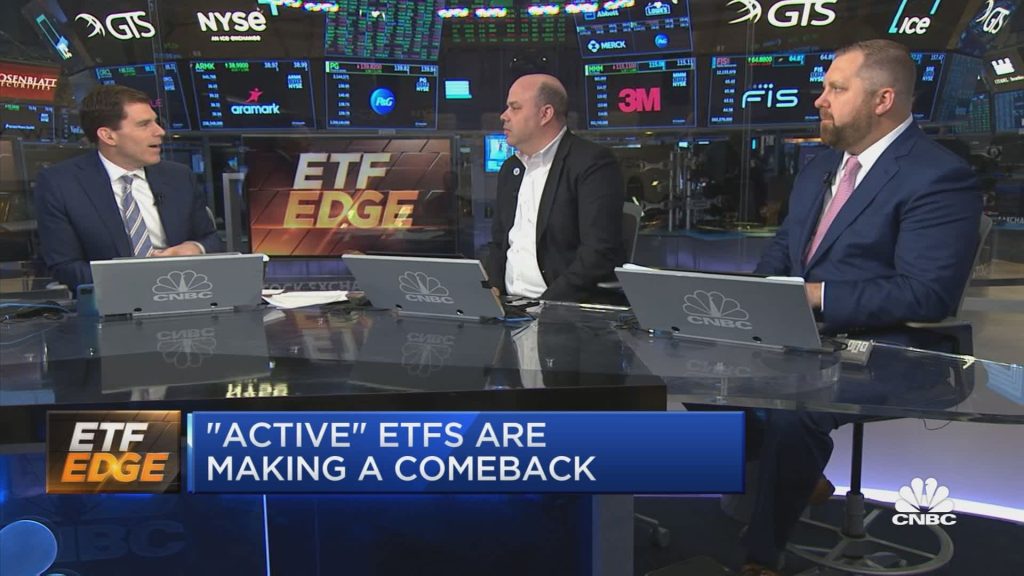
A pair of macroeconomic reports will hog the market’s attention again this coming week, including a reading that is the Federal Reserve’s favorite measure of inflation. Worries about high inflation continue to weigh on investors’ minds, as hotter-than-expected data this week showed the stubbornness of lofty prices. Most important this week is Friday’s core personal consumption expenditure (PCE) price index for January. The Fed prefers this reading because it looks at changes in consumer behavior, including whether buyers are substituting goods based on prices. In comparison, the consumer price index (CPI), released this past week, only tracks price changes over time. The market is expecting the core PCE price index to rise 0.4% monthly and 4.9% annually. We’d like see a bit weaker growth, especially following the hotter-than-expected CPI reading last Tuesday, but not so weak as to spark fears that we are headed into a deep recession, or a so-called hard landing. In addition to the core PCE price index, we’re going to be looking closely at the housing and utilities component. Fed Chair Jerome Powell previously highlighted core services excluding shelter as a metric the central bank is focused on when thinking about how much further rates need to be hiked in order to bring inflation down. Though “core services excluding shelter” is not a specific line item within the personal spending report, if we see the housing and utilities piece was a large contributor to the services index (it was the largest contributor in December), it will provide more insight the Fed’s thinking. The second big report is Thursday’s GDP report, which is a revision to the fourth quarter of 2022. Though the report is very backward looking at this point, it will still provide valuable insight into how the economy has held up in the face of aggressive rate hikes and help determine if the Fed is on the right track. At the same time, fourth-quarter earnings season rolls on, nearing its end. Our focus stays on management commentary for any clues about the future. Within the portfolio, we will hear from: Palo Alto Networks (PANW) on Tuesday after the closing bell; TJX Companies (TJX) on Wednesday before the bell; Nvidia (NVDA), Pioneer Natural Resources (PXD), and Coterra Energy (CTRA) on Wednesday, all after the closing bell; and Bausch Health (BHC) on Thursday, before the open. Here are some other earnings reports and economic numbers to watch in the week ahead: Monday, Feb. 20 U.S. markets are closed in observance of Presidents Day. Tuesday, Feb. 21 Before the bell: Home Depot (HD), Huntsman (HUN), Ingersoll-Rand (IR), Medtronic (MDT), Molson Coors (TAP), Walmart (WMT), Arconic (ARNC), Crestweeod Equity (CEQP), Dana Inc (DAN), Flour (FLR) After the bell: AVANGRID (AGR), Caesars Ent (CZR), Camping World (CWH), Chesapeake Energy (CHK), Diamondback Energy (FANG), Realty Income (O), Toll Brothers (TOL) 10:00 a.m. ET: Existing Home Sales Wednesday, Feb. 22 Before the bell: Baidu (BIDU), Brink’s (BCO), Fiverr (FIVR), Editas (EDIT), Garmin (GRMN), Wingstop (WING), Wix (WIX) After the bell: Altice (ATUS), Apache (APA), DaVita (DVA), eBay (EBAY), Mosaic (MOS), Rio Tinto (RIO), Unity (U) 2:00 p.m. ET: FOMC Minutes Thursday, Feb. 23 Before the bell: Alibaba (BABA), American Electric Power (AEP), American Tower (AMT), Bath & Body Works (BBWI), CBRE Group (CBRE), Cheniere Energy (CQP), CommScope (COMM), Domino’s Pizza (DPZ), Keurig Dr Pepper (KDP), LKQ (LKQ), Moderna (MRNA), NetEase (NTES), PG & E (PCG), Wayfair (W) After the bell: Autodesk (ADSK), Block (SQ), Booking Holdings (BKNG), Carvana (CVNA), Celanese (CE), Intuit (INTU), Kratos Defense (KTOS), MercadoLibre (MELI), Opendoor Tech (OPEN) 8:30 a.m. ET: Initial Claims 8:30 a.m. ET: Gross Domestic Product Friday, Feb. 24 Before the bell: Canadian Imperial (CM), Cinemark (CNK), EOG Resources (EOG), Evergy (EVGR), Ichan Enterprises (IEP) 8:30 a.m. ET: Personal Spending & Income 10:00 a.m. ET: New Home Sales Looking back It was a mixed week for stocks. The Dow fell 0.13%, its third consecutive week of losses, and the S & P 500 dropped 0.27%, its second straight down week. But the tech-heavy Nasdaq managed to rise 0.59%. Investors remain worried about the economy and how the next moves by the Federal Reserve to beat back inflation will impact it. Two key inflation readings this week didn’t help. On Tuesday, the January consumer price index (CPI) report came in hotter than expected with headline CPI and the core rate, which excludes volatile food and energy prices, rose 0.5% and 0.4%, respectively, from December to January. The headline number gained 6.4% from a year earlier and the core rate was up 5.6%. The January retail sales report on Wednesday added to concerns that the economy isn’t slowing down, notching a 3% monthly increase, well ahead of the 1.9% expectation from analysts. On the flip side, January’s industrial production was unchanged from December, below expectations for 0.4% monthly increase. Capacity utilization, meanwhile, came in at 78.3%, down a tick from the revised 78.4% rate seen in December. On Thursday, housing starts were shown to have declined 4.5% monthly in January to a seasonally adjusted annual rate (SAAR) of 1.309 million, while building permits ticked up 0.1% to a SAAR of 1.339 million. Both readings came up short versus expectations. Also Thursday, initial jobless claims for the week ending Feb. 11 came in at 194,000, a decrease of 1,000 from the prior week and below the consensus 200,000. Lastly, the January producer price index came in hotter than expected, rising 0.7% from December versus expectations for 0.4% increase. Under the hood, consumer discretionary led to the upside, followed by utilities and consumer staples. Energy was the biggest loser for the week, followed to the downside by real estate and materials. Meanwhile, the U.S. dollar index is hovering just below 104. Gold is trading at around $1,850 per ounce. WTI Crude prices are hovering in the mid-$70s per barrel region, while the yield on the 10-year Treasury stands at about 3.82%. Within the portfolio the portfolio we received earnings results from Devon Energy and Cisco Systems. (See here for a full list of the stocks in Jim Cramer’s Charitable Trust.) As a subscriber to the CNBC Investing Club with Jim Cramer, you will receive a trade alert before Jim makes a trade. Jim waits 45 minutes after sending a trade alert before buying or selling a stock in his charitable trust’s portfolio. If Jim has talked about a stock on CNBC TV, he waits 72 hours after issuing the trade alert before executing the trade. THE ABOVE INVESTING CLUB INFORMATION IS SUBJECT TO OUR TERMS AND CONDITIONS AND PRIVACY POLICY , TOGETHER WITH OUR DISCLAIMER . NO FIDUCIARY OBLIGATION OR DUTY EXISTS, OR IS CREATED, BY VIRTUE OF YOUR RECEIPT OF ANY INFORMATION PROVIDED IN CONNECTION WITH THE INVESTING CLUB. NO SPECIFIC OUTCOME OR PROFIT IS GUARANTEED.
People walk along 5th Avenue in Manhattan, one of the nation’s premier shopping streets on February 15, 2023 in New York City.
Spencer Platt | Getty Images
A pair of macroeconomic reports will hog the market’s attention again this coming week, including a reading that is the Federal Reserve’s favorite measure of inflation.

